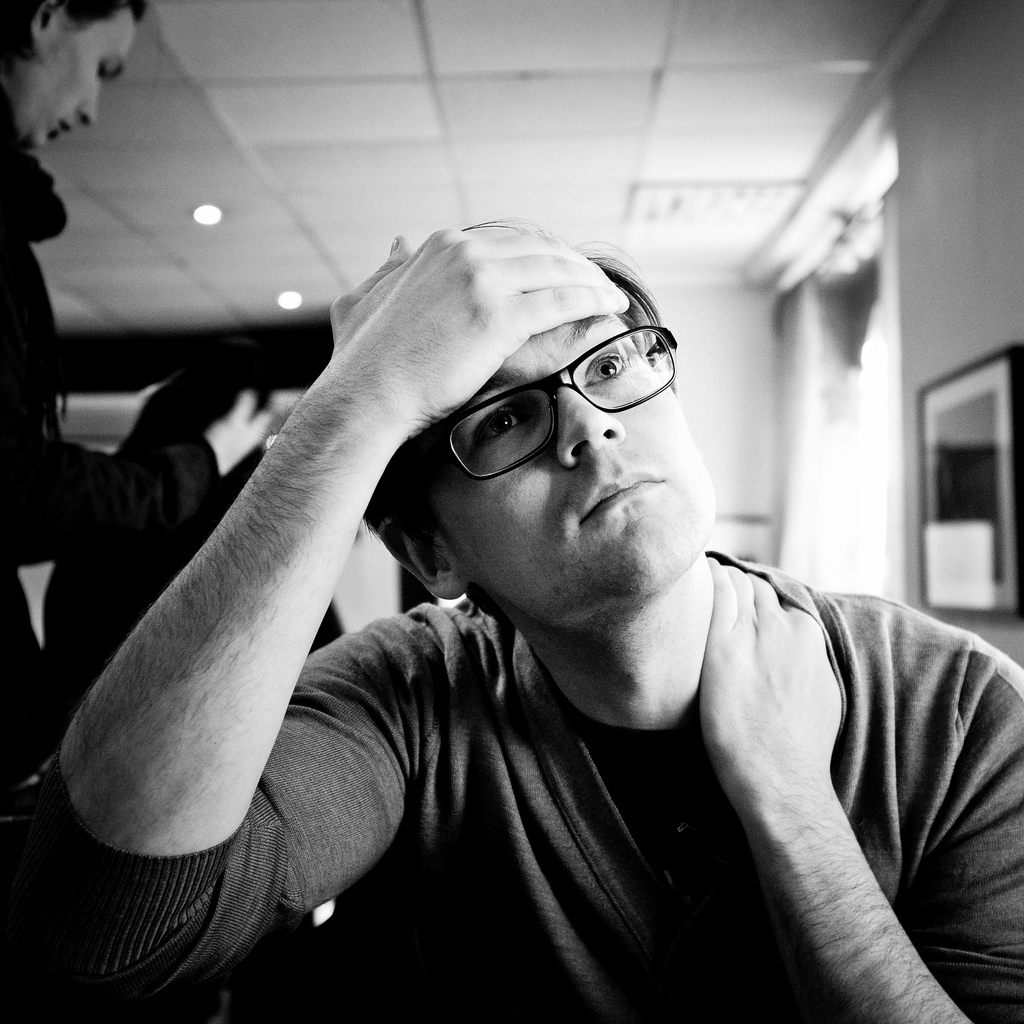A new study published in Pain highlights the wealth and educational disparities among individuals presenting with chronic pain. The author, based at the University of Buffalo, focused on long-term data looking at pain-related disability, which interferes with individuals’ abilities to complete daily activities and tasks.
In a press release to PsychCentral the author, Hanna Grol-Prokopczyk, states,
“I found that people with lower levels of education and wealth don’t just have more pain, they also have more severe pain.”

The prevalence of chronic pain in the U.S. is increasing, and it is the leading cause of disability in the country. According to the National Institutes of Health, it “affects more Americans than diabetes, heart disease, and cancer, combined.” Individuals suffering from chronic pain often have co-morbid symptoms associated with anxiety and depression, and they are often prescribed antidepressants, despite recommendations for treatments to move towards more non-pharmacological approaches. Further, providers often provide opioids for the treatment of chronic pain, an alternative that is considered problematic in the long term.
For this study, the author looked at data collected for a Health and Retirement Study, between 1998 and 2010. The dataset included over 19,000 participants, all aged 51 and older. Individuals with a diagnosis of cancer, or who had been treated for cancer, were excluded from the study.
Results from the longitudinal data point to individuals with lower levels of wealth and education having both more pain and more severe pain. Individuals with the lowest levels of education in the study were 80% more likely to experience chronic pain than those with the most education. In terms of severe pain, those who didn’t finish high school were 370% more likely to experience severe chronic pain than those individuals who attended graduate school. The author also looked at the disability associated with the pain, finding that the same individuals with lower SES were more likely to experience this interference in their day-to-day lives. In addition, the author found that chronic pain not only increased with age, but by time period – i.e., individuals of a certain age group were more likely to report more pain in 2010, than individuals in the same age group 10 years earlier.
“… if you look at the most severe pain, which happens to be the pain most associated with disability and death, then the socioeconomically disadvantaged are much, much more likely to experience it.”
(University of Buffalo News Center)
The study is the first to look at degree of pain in individuals and its associations to SES and mortality. The author concludes with a discussion on the critical importance of investing into understanding chronic pain and developing effective treatments. This is of particular relevance considering recent complicated conversations around the use of opioid treatments and the “punishment” and suffering of chronic pain patients in primary care.
****
Grol-Prokopczyk, H. (2016). Sociodemographic disparities in chronic pain, based on 12-year longitudinal data. PAIN. (Abstract)















And with Dilaudid going for $30 + a pill of course low income people are going to hit up doctors.
60x $30 = $1800
Dilaudid is the king but even the lesser stuff, Roxies , one steady script is rent or payments on a nice new car.
Results from the longitudinal data also points to individuals with lower levels of wealth and education as more likely to sell drugs.
I could go get what ever I wanted before it even gets dark out today. Its easy.
Report comment
Pain is the journal of the American Pain Society – a medical guild more deeply compromised by its bloc with Big Pharma than any out there, including possibly the American Psychiatric Association. They embody everything Mad in America is trying to fight. This article is part of a multi-million dollar propaganda effort mounted by Purdue Pharma (makers of OxyContin) and its allies.
I hope Mad in America does not fall for it. If we can’t get this right, what CAN we get right?
The article contains crumbs of fact – I have no doubt that poor people, and those in strenuous blue-collar jobs in particular, are being subjected to chronic-pain “treatment” based on opioids like OxyContin, Norco, Opana, Zohydro, etc. more than middle-class and rich folks. But that’s not good news. Poor folks are getting this treatment plan – addictive pills rather than physical therapy, time off work, counseling and other humane measures – because rich folks would not stand for it.
Long-term prescription opioids are more than “considered problematic in the long run,” as the folks at Pain so delicately put it. They killed about 14,000 Americans in 2015 alone, and they are killing more as we speak. And the highest death rates are among people in their forties and fifties. In other words: not “recreational” users, but chronic pain patients who may even be taking their pills just as directed.
They have also kicked off a renaissance of heroin use – based largely on younger people who began either by “abusing” prescription pain pills, or getting addicted to them after short-term medical use for injuries, tooth extractions etc. These are the people “switching from pain pills to heroin” – NOT chronic pain patients who have been cut off their meds by increased restrictions, as Purdue Pharma would have you believe.
The line being pushed by the APS and Purdue Pharma is that “recreational” use or “abuse” is the only problem, and any attempt to restrict opioids will only “punish” chronic pain patients. They also try to label anyone who is concerned about those 14,000 deaths – and the wider misery caused by opioid addiction among those who live on – as a “drug war” type who has no compassion for people in pain. The truth is that long-term opioid therapy is not only dangerous – it’s a lousy solution to long-term pain. Really lousy. I see it every day among injured folks in the workers’ comp system.
There are many, many organizations and activists on the ground right there in Massachusetts trying to fight this epidemic unleashed by the medical system. They can help you understand the problem, and why you should be wary of material from the American Pain Society. I hope MiA as a whole will take a deep breath and step back to study this topic before we get ourselves used by the very folks we are trying to fight.
Report comment
As an individual with chronic pain, a low income because of the pain, yet not completely uneducated, all that hard physical work as the pain increased over the years, is the obvious factor here! First, just to make one thing clear, doctors didn’t cause addiction. Taking that much credit for the so called epidemic is arrogant of them and, well, not helpful for those that are working on a control issue!!! Dependencies are part of being human. As far as risks and epidemics, one thing the less financially advantageous and less educated in theory know, an opioid is a safer option than surgery! Lets look at the numbers of deaths per year! According to the Gov. own numbers and what everybody intuitively knows, there were 17,000 deaths from opioid medications in 2015. While there were 75,000 deaths from “hospital acquired infection” after surgery, in the same time period! Cost, availability, risk and pain trying to feed your pie hole are a bit more pressing survival instincts! When their isn’t all care for all people, I doubt there ever be, and no one solution for all pain situations, unless chronic pain has but one solution and treatment for either addiction and pain are treating a standard and not the patient trying to eat while working with some injuries over the years! Absolute answers in all pain or “addiction”, (psychiatric) treatment and causes, in the context of the life before the “patient”, in my opinion, don’t exist, yet! Why treat them that way? Have you really looked at the nature of applying guidelines that mean all Americans lives revolve around the actions of the addict, when it seems more scientific to me, that it be the other way around? As far as addiction today, it’s only being used as a political hot potato and control excuse! Have you seen this article? “Fewer than five percent of patients prescribed narcotics to treat chronic pain become addicted to the drugs, according to a new analysis of past research.
The finding suggests that concerns about the risk of becoming addicted to prescription painkillers might be “overblown,” said addiction specialist Dr. Michael Fleming at Northwestern University’s Feinberg School of Medicine.
“If you’re a person that doesn’t have a history of addiction and doesn’t have any major psychiatric problems, narcotics are relatively safe as long as your doctor doesn’t give you too much and uses the right medication,” Fleming, who was not involved in the new study, told Reuters Health. ” But, I have no opinion on the matter! lol http://vitals.nbcnews.com/_news/2012/11/02/14888025-painkillers-not-as-addictive-as-feared-study-finds?lite
Report comment
The news media and television could be saving countless lives every day if they were running non-stop headlines about the dangers of drug mixing, but they are not. They have been bewitched by the myth of the “demon drug” and prefer to run stories inaccurately labeling opioid-related deaths as heroin overdoses instead of accurately reporting them as polydrug poisonings due to drug mixing…
And let me reiterate that whether heroin or a painkiller is involved, over 90% of these deaths involve drug mixing. Figure 1 shows the CDC data for drug poisoning deaths in the US in 2013.
How the Media Is Fueling the So-Called Opioid Overdose Epidemic http://www.rehabs.com/pro-talk-articles/how-the-media-is-fueling-the-so-called-opioid-overdose-epidemic/
Alot of numbers and statistics. Check it out and don’t mix your chemicals. One party at a time please.
Report comment
Why is MIA publishing this kind of story anyway? — it seems like an implication that the pain being discussed is a “psychological” or “mental health”-related issue.
Report comment
^^^^^^ Agreed!
Nomadic
Report comment
I am a board-certified, family practice physician of thirty-three years who lives and works in Dallas, Texas. I have two messages about chronic pain, one enlightening and one frightening.
The enlightening:
Physical pain is most likely in muscles which will benefit from massage. Massage is entry-level in the broad spectrum of hands-on therapeutic physical therapy options.
The frightening:
60 years ago a group of doctors tricked themselves into believing that they could fix pain by using knives, saws, chisels, brackets, steel or cocaine and opium derivatives.
Physical pain is not in bone or nerves will only fully benefit from physical therapy.
Removing bone and using opiate and cocaine derivatives are the wrong treatments for physical pain.
• Thus the location and source of physical pain are not in the brain, the skeleton, joints, vertebra, nerves, or nerve roots.
The gruesome:
Google Christopher Duntsch he is a surgeon who was groomed by instructions from the AMA to become a Tormentor, Punisher who dismantled and dismembered innocent people for profits and have a license to kill.
These groomed Tormentors do not care if you are poor or wealthy.
This ghoulish and gruesome industry just needs bodies.
Report comment